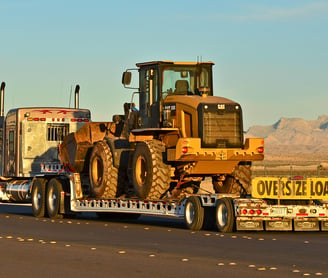CARB - UIIA - SCAC REGISTRATIONS - 630-422-7497 - PERMIT@SAFETYPARTNERS.ORG
Ensuring Truck Driver Safety on America's Highways
In this informative and engaging blog post, we delve into the world of truck driver safety and explore the measures needed to ensure their well-being on the road.
SAFETY
Marcin Rogalski
5/31/20232 min read


Truck drivers play a critical role in keeping goods moving across the country, ensuring our stores are stocked and our economy remains vibrant. However, this demanding profession comes with its own set of challenges, particularly when it comes to safety. In this blog post, we will explore the importance of truck driver safety, discuss the unique risks they face on the road, and highlight key measures that can be taken to enhance safety for both drivers and other road users.
Understanding the Challenges: Truck drivers face a range of challenges that can impact their safety on the road. Long hours, irregular schedules, and the need to meet tight delivery deadlines often contribute to fatigue, which is a significant concern. Additionally, distractions, such as mobile devices or in-cab technology, can divert attention from the task at hand. Poor weather conditions, aggressive driving behavior from other motorists, and inadequate training can further compound the risks faced by truck drivers.
Promoting Healthy Habits: Maintaining physical and mental well-being is crucial for truck driver safety. Adequate rest and sleep are essential to combat fatigue and promote alertness. Employers should prioritize realistic schedules that allow for sufficient rest breaks and comply with regulations governing hours of service. Encouraging healthy habits, such as regular exercise, proper nutrition, and mental health support, can also contribute to overall well-being and reduce the risk of accidents caused by fatigue or stress.
Training and Education: Comprehensive training programs are vital for ensuring truck drivers possess the necessary skills and knowledge to navigate the road safely. Proper training should cover defensive driving techniques, handling emergencies, and the use of new technologies and safety features. Ongoing education and refresher courses can help drivers stay updated on industry best practices and regulatory changes.
Implementing Technology for Safety: Advancements in technology have provided valuable tools for improving truck driver safety. Vehicle safety features, such as collision warning systems, automatic emergency braking, and lane departure warnings, can assist drivers in avoiding accidents. Telematics and GPS tracking systems help monitor driver behavior and provide feedback on areas that need improvement, such as speeding or harsh braking. Additionally, fatigue detection systems and electronic logging devices can help manage driver fatigue and ensure compliance with hours-of-service regulations.
Encouraging a Culture of Safety: Creating a culture of safety within the trucking industry is crucial. This involves fostering open communication between drivers, management, and safety departments. Encouraging drivers to report safety concerns or near-miss incidents without fear of repercussions can help identify potential hazards and prevent accidents. Recognizing and rewarding safe driving practices can further incentivize drivers to prioritize safety.
Collaboration and Advocacy: Improving truck driver safety requires collaboration between industry stakeholders, policymakers, and advocacy groups. It is important to advocate for regulations that prioritize safety, such as maximum driving hours, mandatory rest breaks, and stringent licensing requirements. Sharing best practices, promoting research and innovation, and supporting initiatives that enhance driver training and well-being can collectively contribute to a safer environment for truck drivers.
Truck driver safety is paramount for ensuring the smooth flow of goods and the protection of lives on America's highways. By addressing the challenges faced by truck drivers, implementing safety measures, and fostering a culture of safety, we can work towards creating an industry that values and prioritizes the well-being of those behind the wheel. Together, we can navigate the road to safety and make our highways safer for everyone.
Follow Us
Contact
(630)-422-7497
permit@safetypartners.org
Copyright © 2022 Master Safety & Permits LLC - All Rights Reserved. Helping Truckers Since 2008.
Industry Partners














